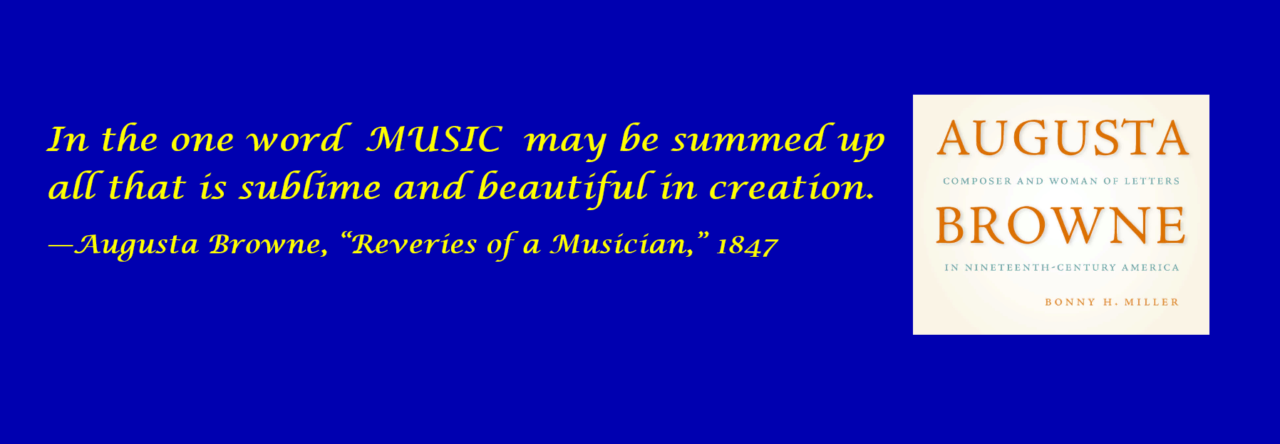Where can I see sheet music by Augusta Browne? How can I hear music by Augusta Browne? These are the questions people ask most frequently about the composer. On the Music Editions page of this website, you will find links to open-access databases that include nineteenth-century imprints of music by Browne. The Music Editions page lists more than eighty music titles available online. The entries are arranged by genre (piano pieces; songs; hymns), then alphabetically by title.

Look for “Listen to the Music” links on the Music Editions page for online performances of music by Augusta Browne. Some renditions are recorded performances, others are audio files generated from Finale music notation software.
My Recordings

I prepare my own music examples when I speak about Augusta Browne. Whenever possible, I play the examples live at the piano. Sometimes I record myself playing Browne’s pieces or excerpts from them to use as examples. Other times I create an audio file of Browne’s music using Finale software. Blogs on my website contain both live recordings and audio simulations.
The first piano solo by Augusta Browne that I played in lecture-recitals—beginning in 1985—was the Columbian Quickstep. Browne published this number in 1844 in the Columbian Magazine and dedicated it to the magazine readers. I always liked this spirited piano dance, and apparently the composer liked it, too. She republished the same piece under a different title, The Mexican Volunteers Quickstep, during the Mexican-American War.
My rendition of the Columbian Quickstep is an audio file embedded in the blog. Sometimes creating an electronic file is easier than making an actual recording, owing to the perpetual issues of venue, instrument, and the specialized equipment needed for a live recording. In the absence of a handy recording studio or concert hall, I use my piano in its domestic setting, complete with noise from nearby leaf blowers and emergency vehicles. Accordingly, my homespun recordings leave much to be desired in audio quality.
In recent years I recorded Browne’s American Bouquet in my home. The solo piano arrangement includes three patriotic American songs: “The Star-Spangled Banner,” “Hail, Columbia” (with a variation), and “Yankee Doodle.”  Browne published this song in 1841, when she moved to New York City as a young music professor.
Browne published this song in 1841, when she moved to New York City as a young music professor. I described the American Bouquet and the history surrounding it in a blog for the Fourth of July. You can scroll down to find the soundtrack in the essay. Once again, the sound quality of a home recording is far from high fidelity.

“Miss Augusta Browne” published a unique music score printed in bright colors in The Iris Souvenir for 1851. A blog essay tells the story of the Iris gift book and Browne’s illustrated music. The notes are almost too tiny to read without enlarging the page. I used the Finale program to make an audio file of The Iris Waltz that brings the music to life.
As interest in Browne’s music grows, more pianists and singers will program her compositions and upload recordings of their performances. In addition, rapidly evolving media, audio technology, and AI should hasten a breadth of ways to generate aural access to music by Augusta Browne and other once-obscure composers.
